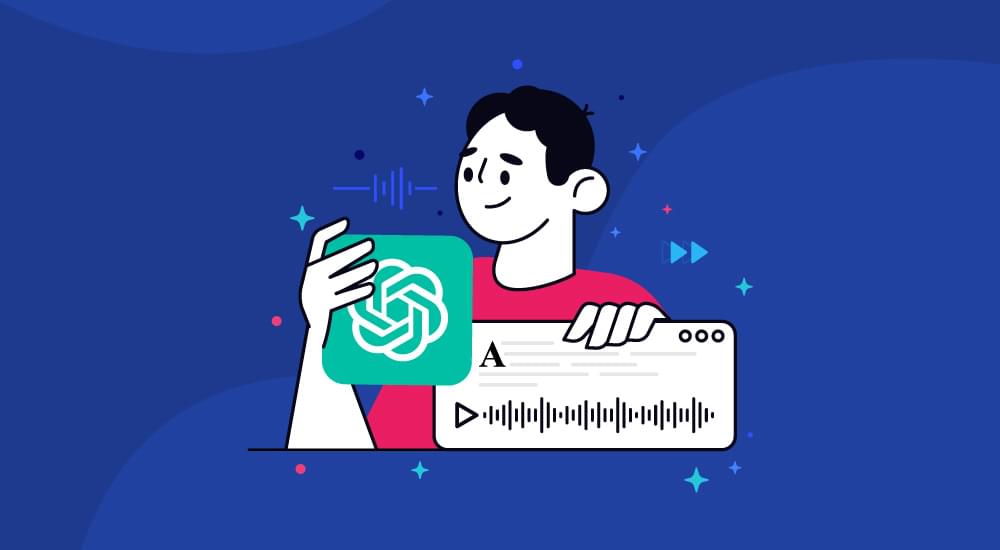voice technology tutorials
11 Ways to write a conversational blog that converts!
Around 5 billion people out of approximately 8 billion world population consume information on the internet every day—thanks to content creators, organizations, and enterprises for spreading a thought-leader process, positive knowledge, and valuable information.
The online world plays the role of the most integrated chain of information, entertainment, business, and much more. We feel connected, valued, and informed here—putting content creators under obligation to make a strong connection or bond with their audience every day.
Besides achieving the myriads of benefits such as getting more engagement, leads and conversion—its more about valuing your audience by sorting out their problems and fulfilling their wishes. Therefore, an unavoidable need to start a conversation on blog or conversational blog, social media posts, podcasts or videos—all you need to create engaging content every day, no matter what form of content you prefer.
How can you write a conversational blog that converts?
We are not online to read out some fancy, unreal and inauthentic stuff to escape our problems. We are here to find timely solutions to our problems. Therefore, it’s a first priority to find the content that speaks the real sense and speaks to us directly about the answers to our problems.
Consequently, you might have seen microblogging(a short piece of content, 30 seconds to minutes blogs posts, audio blogs or vlogs) is in trend on almost all social media channels and platforms.
1. Keep your opening lines catchy and engaging!
Opening lines are an amalgamation of your entire content. They must be catchy, engaging and pique curiosity while posing a snapshot of the tone and general appeal of the rest of the content. AI content writing tools can be a savior here. It helps you generate different introductions. Readers or viewers spend about 37 seconds skimming through the entire blog post. Catching their attention at the beginning is the real trick. If you can nail this, your efforts are considered well paid already.
Opening lines should be about the solution your readers are looking for. You can give them the slightest clue to begin with and grab their attention and make them feel connected to your content.

Here are a few more hacks to start a conversation on blog that converts the reader in the beginning.
- Begin with a question
- Pose a problem (a.k.a the PAS method — Problem Agitate Solution)
- Add metaphors
- Begin with comparison
- Begin with a story that speaks about real experiences
- Lead with a statistics
- Make a bold/controversial statement
- Begin with a quote
- Add voice to the blog
- Establish the groundwork/outline for future pacing of the blog
2. Know your target audience and connect with them!
Beginning with using a factual stat can never go wrong to start a conversation on blog and engage readership till the end.
Begin with writing about those pain points directly or assure them that they will find answers to their problems. The best way is be transparent, quote examples from experiences or share user stories who got the same problems and how they got their way out. Else you could add statistics to validate your statement.
Go whatever way is easier for you, but never forget to sound your blog easier and an exciting read. After all, people don’t want to see the truth in the hard way. So, better sugar coat all complex and technical elements.
After the introduction, you can share the table of contents for your readers to skim through and click on the blog’s specific section that answers their queries.
You can transform your stats enjoyable in a few different ways:
- state an exceptional growth stat (“Instagram has reached XX million users”)
- Put a dollar-based stat (“Most content creators add figures like $XXX per month blogging”)
- Add a stat that shows how other users dealt with the same problem (“XX% of marketers also struggle with budgeting problem”)
- Use stats as a comparison (“XX% of writers swear by using marketing personas, while XX% of users want more customization”)
3. Know your reader’s psyche
One of the influencing factors in digital marketing is generating emotions through empathy, FOMO (fear of missing out), excitement and even frustration. Empathy is the new data for advertising your business and products. Therefore, content creators and business strategists utilize the emotion factor to influence their users for the longer term. Even if they don’t want to buy your products, they will still remember your brand or would like to refer it to their friends and family.
Using emotions is also necessary to make your users and audience feel more connected valued and known. Using emotions means their pain points, problems and desires are being heard properly. Emotions generate a subtle kind of attachment and belonging with the brand. This is why advertisements tell about traditional, cultural, social, and religious events to make your users feel more connected and valued. Empathizing with your users is a powerful way to make them feel that they are not alone. It is very important to make them realize they are not alone in this boat and others are also dealing with the same struggle, and your products are doing their very best to bring timely solutions.

Once you know how you can hook up your readership, it will never be difficult for you to start a conversation on blog, get conversions and to bind your audience till you told them everything on what they came looking for.
4. Show them stats : real-time value of your blog post
Besides humans, the first impression also matters when blogging posts or building your brand impression. Whether it’s a Podcast, video, or a blog capturing the reader’s attention in a few seconds is crucial. Take advantage of video editing tools to make your videos more captivating to your audience. If your opening lines are not clear, your audience will lose track.
Show them the reason why they should keep reading the blog. It means you are giving them a clear vision about what the blog is about, the possible pain points and their solutions, and a learning edge to all technical elements relating to the products are helpful information about your business.
You can use a simple hack such as statistics, pain points leading to empathy, and valuable solutions. It means you explain the problems and all the technicalities relating to generating useful emotions and cleverly give a call to action in the end.
5. Write like you and your readers are talking : add the 5 W’s.
The 5 Ws of digital marketing will never go out of fashion. What are they? Lets discover;
- Who?
- What?
- When?
- Where?
- Why?
The 5 Ws are essential for a conversational blog. You can add them in the introduction as they can pique the curiosity about the specific problems.
For instance, if your blog post is about a specific pain point. You can begin with 1. Who is this post for? 2. What are some of the main challenges people face with the specific challenge? 3. When is the best time to resolve it? 4. Where can people find helpful resources when it comes to finding solutions? 5. Why are its solutions critical? Make sure you interestingly answer these questions. By interestingly answering these queries, you’ll set the tone for the rest of the blog and can make sure your readers are not losing interest from the very start.
Pro-tip: Keep it concise! No more than 2-3 lines should represent each “W.” Alternatively, you risk making your introduction too long.
6. Ask a compelling question

Questions are good to pique the readers’ curiosity and give them a fair idea of what the blog is about. Initiating a blog with a question is a great way to start a conversation on blog and keep the readers’ curiosity intact.
A well-established, innovative query grabs interest and prompts more questions. Asking a question is also the best way to humanize your brand. It creates the bond of connectivity to discover the answer for the reader. It’s the best hack to use if you want your blog’s tone to come off as warm and nice. In brief, the reader who would like to go with the reading to find the answer. Here are a few tips you can add questions in the blog:
- Open-ended question (best way to begin with the current scenarios)
- Rhetorical question (“Would there still be content if all content creators just quit one day?”)
- Yes/no question (“Have you ever experienced an analytics anomaly?”)
7. Use engaging quotes/phrases are fine as well
Quotes are the content copies that speak directly about users pain points most interactively and factually to bind readers with the text. Readership will be captivated whether it’s a well-known quote or an unknown one. Why?
Quotes can be about anything, as they are statistical, factual, trend-based, economic or philosophical experts insights—are always helpful to kick start your argument.
- If you use a quote from an obscure or irrelevant source, it can be a turn-off for your readers
- If you use a super popular quote from a well-known figure, it will run the risk of sounding cliché (think: “content is king”)
The sweet spot? A somewhat-commonly known quote from a relevant or authoritative source. Bonus points if it’s a brand-new quote.

8. Use storytelling techniques that are relatable
Telling a great personal experience and the story that tells an outstanding achievement is a great way to lead your audience on an exciting journey of finding great solutions.
Content creation is always about creating a well-crafted story that could engage readers for a more extended time. Stories always play an important part in memorizing the events and essential detail. Therefore, whether it’s a podcast, audio blog, movie, drama serial or a great novel—it has always a great story to tell.
Does your business have a great story to tell to your users and audience?
Have you ever wondered why children’s stories are widely read even the adults enjoy them so well? Because they are beautifully written in a straightforward tone. They use concise sentences and simpler vocabulary that is straight to the point. Even with that simplistic tone children book stories never fail to grab the attention of both children and adults. And you might have noticed children’s stories always leave a long-lasting impression on your brain canvas. You still remember your favorite childhood story no matter how old you get.
Therefore, it is recommended to use a simplistic story-like narrative to start a conversation on blog and explain your point of view. This is why most enterprises, organizations, and startups use the most simplistic narrative to explain the most complicated and technical elements of the products.
Use a story-like narrative to build a long-lasting relationship with your reader whether they want to buy your product or not they would still like to come on your website or social media pages to read out your content.
Story-like narrative always helps readers to visualize what you are trying to say.
How can you make your business story great?
- You can begin by telling a real-life event that happened to you or other enterprises facing the same problem.
- Tell your readers a great anecdote about the real-time experiences and what their solutions are.
- You can also make up a hypothetical scenario it also don’t go wrong.
- Always make sure that your story has a great relevance to your blog post.
Have you ever tried Ross Simmonds, from Foundation? He has a great narrative style to start his blog posts and stories.
Related Blog:
9 best apps that read to you
9. Keep your intro short and sweet!
A well-written opening paragraph does not need a gazillion words. Make sure your intro lines are sweet, nice, short and personalized to hook up your readers.
Most of the marketers and content creators use a formula of KISS: keep it short and sweet.
Here are the general tips you can use to write a beautiful to start a conversation on your blog’s opening lines.
- Starting with a question can never go wrong.
- Using statistics leads to an exciting story.
- Never forget to emphasize on key points of your blog post and never forget to mention them in the introduction.
- Always show your readership the value of the content they are going to read.
10. Add a surprise factor or controversial element
Using a story-like tone is always a safe play. But if you want to go against the normal. It’s possible. You can start a conversation on a blog with a controversial statement that can pique the reader’s curiosity and drive them to read more and more.
You can also play safe with controversial elements or surprise factors you can apply on your blog. Let’s see how you can add surprise factors or controversial statements to your blog post.
- You can add an unpopular opinion that is almost incorrect but not false entirely.
- You can make an unexpected request such as do not read this article.
- You can add surprising statics that is funny or awkward. You can open up a conversation with emotional or powerful words.
- If your brand impressions allow, you can use some swearing.
Pro-tip: No doubt this technique can turn heads easily, you also run the risk of landing into clickbait domain. Keep your content away from sensationalizing and you are good to go to hook up your readership
11. Don’t be afraid to be bold.
When the surprise factor technique can turn heads easily. If you want to try something above than this. You can employ AI such an article writer which can push the boundaries even further by stepping out of the conventional norms and crafting thought-provoking content that incorporates bold statements, sparking engaging conversations on the blog. You can always go out of the box and make bold statements to start a conversation on your blog. You can begin your blog with a meme, GIF or an image that is funny, useful or relevant. It will make your blog unique.
Using visual content that offers a useful business story can offer a ton of value to your audience and readership, giving them a lasting impression about your brand. For instance, you can use pop culture references that are a great way to add a sense of excitement to your blog and make your blog a witty text. So, never stop experimenting with different visual mediums and get Procreative procreative.
Pro-tip: if you are using multiple platforms to market your products, you can use interactive visuals when repurposing or promoting content.
What method to start a conversation on blog will you try next?
Using a conversational tone and methods play an essential role in whether the audience will stick around or not, so keep going with making perfect. In this blog, you have narrated 11 ways to start a conversation in the blog.
Try using mixing these tips to engage and bring more conversion on your blogs. With more advanced tools keep thriving in the market, content creators and business strategists will have more leverage to create content seamlessly.
For now, keep the blogs concise, to the point, sweet and exciting to stimulate your audience’s curiosity.









